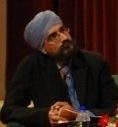
by Habhajan Singh
Takaful in the Gulf Cooperation Council (GCC) and Malaysia are at very different stages of development with each region facing unique challenges, said a global study on takaful by Ernst & Young (E&Y).
The World Takaful Report report, based on a combination of quantitative data and qualitative comments, had made some observations on areas like on efficiency operations, quality of underwritten business and ensuring investment discipline.
On efficiency operations, the report said most takaful operators have yet to achieve critical business volume, despite incurring substantial establishment costs over the years. Also, players have combined ratio is much higher than conventional peers while service quality remains sub optimal for many operators.
It made some recommendations on lowering cost of operation, which included targeting economies of scale and scope through organic and inorganic growth; articulate cost strategy for customer acquisition, servicing and retention; improve loss ratios through changed business mix and better claims management; and consider shared service arrangement for back office operations.
On risk retention, it noted that Malaysian takaful operators, on the average operators cede between 5%-15% of gross premiums to retakaful entities while retaining a larger proportion of business on their books and converting this into better technical results.
"This strategy requires greater underwriting competence and track record (using historical data) to build a quality book," it noted. On the other hand, GCC operators on average cede between 30%-50% of gross premiums to retakaful companies, which reduces their ability to generate potentially positive underwriting results, and that the broking approach causes excessive reliance on investment returns to generate profitability.
On technical results, Malaysian operators' average claims ratio of between 25%-35% is reflective of stronger underwriting discipline and diversified business.
"Strong underwriting results allow operators to benefit from a larger participants pool and ability to re-distribute surplus, generating strong customer c onfidence. Underwriting results account for the majority of overall profitability," it said.
On the GCC front, the higher average claims ratio of between 40%-60% can be improved through stronger underwriting competence.
"As historical data becomes more readily available, operators should strive to build cleaner books of diversified business. Weak technical results have led operators to become heavily reliant upon investment income, that are volatile, to achieve shareholder expectations," the report noted.
The report noted that global takaful contributions grew 29% in 2008 to reach US$5.3 billion (RM16.9 billion) and remain on course to surpass US$8.9 billion (RM28.38 billion) by 2010.
"Strong growth in health takaful in GCC, and family takaful in Malaysia are two noteworthy trends that have delivered growth for many operators. Government safety nets are being reduced providing new opportunities to offer product solutions in these respective business lines," E&Y said in a press release when announcing the report.
Saudi Arabia, with contributions totalling US$2.9 billion in 2008, and Malaysia with US$900 million are the top two takaful markets in the world. Sudan is the most significant market outside of the GCC and South-East Asia, with contributions totalling US$280 million in 2008, it said.
(This story appeared in The Malaysian Reserve on 26 April 2010. The Malaysian Reserve is a daily business/finance newspaper published out of Kuala Lumpur, with a sectoral page on Islamic finance on Mondays, edited by Habhajan Singh)

No comments:
Post a Comment